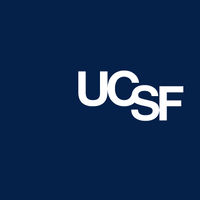预约演示
更新于:2025-05-07
Bacterial top IV
更新于:2025-05-07
基本信息
别名- |
简介- |
关联
103
项与 Bacterial top IV 相关的药物作用机制 Bacterial DNA gyrase 抑制剂 [+1] |
非在研适应症- |
最高研发阶段批准上市 |
首次获批国家/地区 日本 |
首次获批日期2020-11-27 |
作用机制 Bacterial DNA gyrase 抑制剂 [+1] |
在研机构 |
原研机构 |
在研适应症 |
非在研适应症 |
最高研发阶段批准上市 |
首次获批国家/地区 印度 |
首次获批日期2020-01-16 |
1,188
项与 Bacterial top IV 相关的临床试验NCT06441006
Program for Rifampicin-Resistant Disease With Stratified Medicine for Tuberculosis (PRISM-TB)
PRISM-TB is an international, multicenter, open-label, randomized, controlled, pragmatic, stratified medicine, treatment shortening, noninferiority Phase 3 clinical trial for fluoroquinolone-susceptible multidrug-resistant/rifampin-resistant pulmonary tuberculosis (FQ-S MDR/RR-TB).
The trial objective is to evaluate whether stratified medicine treatment strategies for FQ-S MDR/RR-TB, defined by a pre-specified risk stratification algorithm, have noninferior efficacy to a one-size-fits-all control regimen (the local standard-of-care [SOC] regimen consistent with preferred regimen(s) in international guidelines), as measured by TB-related unfavorable outcomes at Week 73.
The trial objective is to evaluate whether stratified medicine treatment strategies for FQ-S MDR/RR-TB, defined by a pre-specified risk stratification algorithm, have noninferior efficacy to a one-size-fits-all control regimen (the local standard-of-care [SOC] regimen consistent with preferred regimen(s) in international guidelines), as measured by TB-related unfavorable outcomes at Week 73.
开始日期2026-10-01 |
申办/合作机构 |
NCT06810583
A Prospective, Single-Arm, Trial of Dalbavancin-Based Prophylaxis in Children and Adolescents With High-Risk Leukemia
This is a single-arm pilot clinical trial evaluating dalbavancin-based prophylaxis in children and adolescents with acute myeloid leukemia or relapsed lymphoblastic leukemia receiving myelosuppressive chemotherapy.
Primary objective:
- To estimate the rate of bacterial bloodstream infection in pediatric patients with AML or relapsed ALL undergoing chemotherapy receiving dalbavancin-based prophylaxis
Secondary objectives:
* To describe the population pharmacokinetics of every 28 days dalbavancin up to 12 weeks in pediatric patients with AML or relapsed ALL undergoing chemotherapy
* To describe the tolerability of every 28 days dalbavancin prophylaxis in pediatric patients with AML or relapsed ALL undergoing chemotherapy
* To describe the acceptability of every 28 days dalbavancin prophylaxis in pediatric patients with AML or relapsed ALL undergoing chemotherapy
* To estimate the rates of likely bacterial infections, Clostridioides difficile infection, and febrile neutropenia in pediatric patients receiving dalbavancin-based prophylaxis
Primary objective:
- To estimate the rate of bacterial bloodstream infection in pediatric patients with AML or relapsed ALL undergoing chemotherapy receiving dalbavancin-based prophylaxis
Secondary objectives:
* To describe the population pharmacokinetics of every 28 days dalbavancin up to 12 weeks in pediatric patients with AML or relapsed ALL undergoing chemotherapy
* To describe the tolerability of every 28 days dalbavancin prophylaxis in pediatric patients with AML or relapsed ALL undergoing chemotherapy
* To describe the acceptability of every 28 days dalbavancin prophylaxis in pediatric patients with AML or relapsed ALL undergoing chemotherapy
* To estimate the rates of likely bacterial infections, Clostridioides difficile infection, and febrile neutropenia in pediatric patients receiving dalbavancin-based prophylaxis
开始日期2025-06-01 |
NCT03244072
Safety and Efficacy of Intracameral Zimoxin (0.1% Moxifloxacin Solution) for Prevention of Endophthalmitis After Cataract Surgery
Intracameral injection of 0.1% moxifloxacin solution after cataract surgery to prevent endophthalmitis
开始日期2025-06-01 |
申办/合作机构 |
100 项与 Bacterial top IV 相关的临床结果
登录后查看更多信息
100 项与 Bacterial top IV 相关的转化医学
登录后查看更多信息
0 项与 Bacterial top IV 相关的专利(医药)
登录后查看更多信息
124
项与 Bacterial top IV 相关的文献(医药)2025-03-01·Veterinary Microbiology
Phenotypic antibiotic resistance prediction using antibiotic resistance genes and machine learning models in Mannheimia haemolytica
Article
作者: Ellis, Audrey C ; Johnson, Timothy A ; Verma, Mohit ; Wickware, Carmen L
2025-02-01·The Journal of Antibiotics
Novobiocin primarily targets ParE in Neisseria gonorrhoeae
Article
作者: Matoba, Kazuaki ; Ishizaki, Yoshimasa ; Hayashi, Chigusa ; Igarashi, Masayuki
2025-01-01·Chemistry & Biodiversity
Exploring the Antimicrobial Potential of Novel 1,2,4−Triazole Conjugates with Pyrazole: Synthesis, Biological Activity and In Silico Docking
Article
作者: Kolukula, Ganesh Babu N. V. N. ; Rao Allaka, Tejeswara ; Subramanyam, Sibbala ; Ahmed, Mohammad Z.
9
项与 Bacterial top IV 相关的新闻(医药)2024-12-11
LONG BEACH TOWNSHIP, N.J.--(
BUSINESS WIRE
)--Fonseca Biosciences (“Fonseca”) announced today an agreement with MerLion Pharmaceuticals GmbH granting Fonseca the exclusive rights to market and distribute XTORO
®
(finafloxacin otic suspension) 0.3% in the United States. Millions of Americans suffer from acute otitis externa (AOE), better known as swimmer’s ear. Fonseca is stepping up to deliver a new option, XTORO, which is approved by the US Food and Drug Administration (FDA) for the treatment of AOE.
Finafloxacin, the active ingredient in XTORO, is an advanced-generation fluoroquinolone that demonstrates broad spectrum microbiological activity against key AOE pathogens, including organisms resistant to other fluoroquinolones. In clinical studies XTORO provided rapid symptom relief and sustained clinical efficacy at test of cure, with a favorable safety and tolerability profile.
XTORO is FDA approved but has not launched in the US. Fonseca has submitted a Prior Approval Supplement to the FDA seeking US marketing authorization. Subject to FDA approval of Fonseca’s application, Fonseca expects to begin distribution of XTORO in mid-2025.
“At Fonseca Biosciences, we are passionate about commercializing therapies that truly make a difference. XTORO
®
represents a significant step forward for patients with swimmer’s ear, offering rapid relief and addressing a critical unmet need,” said Mike Luby, Founder and CEO of Fonseca. “Stay tuned for updates as Fonseca prepares to launch XTORO
®
in mid-2025, helping to bring relief to millions across the US.”
About XTORO
®
Important Safety Information
Indications and Usage
:
˗ Xtoro
®
(finafloxacin otic suspension), 0.3% is a quinolone antimicrobial indicated for the treatment of acute otitis externa (AOE) with or without an otowick, caused by susceptible strains of
Pseudomonas aeruginosa
and
Staphylococcus aureus
in patients age 1 year and older.
Contraindications:
None
Warnings and Precautions:
˗ Prolonged use of this product may lead to overgrowth of nonsusceptible organisms. Discontinue use if this occurs.
˗ Allergic reactions may occur in patients with a history of hypersensitivity to finafloxacin, to other quinolones, or to any of the components in this medication. Discontinue use if this occurs.
Adverse Reactions
: The most common adverse reactions occurring in 1% of patients with XTORO were ear pruritus and nausea.
About Fonseca
Fonseca Biosciences is redefining pharmaceutical commercialization for a new era. As a privately held life sciences company, we specialize in bringing innovative therapies to market that fulfill critical unmet needs. With a visionary playbook, seasoned leadership, and an unwavering commitment to rapid and effective execution, we bridge the gap between discovery and delivery—turning potential into profound impact. Discover how Fonseca Biosciences is redefining what’s possible at
www.fonsecabio.com
.
US24XTR0003
上市批准引进/卖出
2024-10-17
On October 16, 2024, global pharmaceutical company GSK announced that the US Food and Drug Administration (FDA) has officially accepted their New Drug marketing application (NDA) for Gepotidacin and granted the drug priority review. This decision signals the promise of Gepotidacin as a new oral antibiotic for the treatment of simple urinary tract infections (uUTI). The drug is indicated for female adult patients weighing not less than 40 kg and for adolescent patients weighing not less than 40 kg and aged 12 years and older. According to the FDA's review schedule, the drug is expected to have a premarket review date (PDUFA) of March 26, 2025.
Gepotidacin is a new class of antibiotics that belongs to first in class, meaning it is the first drug in this class to be developed. Its mechanism of action is unique and different from existing quinolone antibiotics. The chemical structure of Gepotidacin belongs to the class of triazacenaphthenes, which effectively blocks the replication process of bacterial DNA by selectively and evenly inhibiting the bacterial DNA cyclotase (a type of Top II) and Top IV. This dual inhibition makes it possible for Gepotidacin to significantly affect its susceptibility to drugs only when the Top II and Top IV enzymes of bacteria mutate at the same time, thereby reducing the risk of bacterial resistance.
The successful acceptance of the new drug application was supported by positive data from two pivotal Phase III clinical studies, EAGLE-2 and EAGLE-3. Both studies were global, randomized, double-blind, non-inferior Phase III clinical trials involving a total of 3,136 patients. The primary objective of the study was to evaluate the efficacy and safety of Gepotidacin (1500mg twice daily) versus furantoin (100mg twice daily) in the treatment of uUTI. The primary endpoint of the study was the number of patients who had a therapeutic response (both clinical and microbiological) at day 10 to 13 post-treatment, the Test of Cure (TOC) visit.
In the EAGLE-2 study, 50.6 percent of patients treated with Gepotidacin achieved "treatment success," compared to 47.0 percent of patients treated with furantoin. In the EAGLE-3 study, the "treatment success" rate was 58.5 percent in the Gepotidacin group and 43.6 percent in the furantoin group. In addition, in key subgroups at higher risk of treatment failure, including patients infected with other antibiotic-resistant E. coli pathogens, patients with a history of relapse, and patients over 50 years of age, Gepotidacin also demonstrated a non-inferior efficacy comparable to that of furanotoin.
In terms of safety, the most commonly reported adverse events (aes) in the Gepotidacin group were gastrointestinal reactions, with diarrhea (16%) and nausea (9%) being more common. However, most of these adverse events were mild (grade 1, 69%) and moderate (grade 2, 28%), with less severity.
Uncomplicated urinary tract infections (uUTI) are a very common outpatient infection, with more than half of women statistically suffering from a uUTI during their lifetime, and more than a quarter suffering from recurrent uUTI. If Gepotidacin can be successfully marketed, it will be the first new oral antibiotic to treat uUTI in more than 20 years, which will provide patients with a new treatment option that is expected to improve treatment outcomes and reduce resistance issues.
临床3期优先审批临床结果申请上市合格传染病产品
2024-10-16
·药明康德
▎药明康德内容团队编辑
GSK今天宣布,美国FDA已接受其潜在"first-in-class"口服抗生素gepotidacin的新药申请(NDA),用于治疗患有单纯性尿路感染(uUTI,也称为急性膀胱炎)成年或青少年(≥12岁)女性患者,患者体重须≥40公斤。FDA授予该申请优先审评资格,并预计在2025年3月26日前完成审评。根据新闻稿,若获批,gepotidacin将成为20多年来首个用于治疗uUTI的新型口服抗生素药物。
超过一半的女性一生中会罹患uUTI,其中约30%的女性会发生复发。由于耐药细菌引起的uUTI病例不断增加,可能导致更高的治疗失败率,因此急需开发新的治疗方法。
该新药申请得到了关键性3期EAGLE-2和EAGLE-3试验积极结果的支持。在这些研究中,与目前uUTI标准疗法nitrofurantoin抗生素相比,gepotidacin在治疗确诊的uUTI成年与青少年女性患者中展现非劣效性,这些患者已知对nitrofurantoin应答。
▲Gepotidacin分子结构(图片来源:PubChem)
在EAGLE-3试验中,gepotidacin与活性对照药物相比具有统计学显著优势,58.5%(n=162/277)的gepotidacin组患者治疗成功,而此数值在活性对照药物组中为43.6%(n=115/264,差异14.6%,95% CI:6.4~22.8)。在EAGLE-2试验中,50.6%(n=162/320)的gepotidacin组患者显示出治疗成功,而此数值在活性对照组中为47.0%(n=135/287,差异4.3%,95% CI:-3.6~12.1)。
Gepotidacin在EAGLE-2和EAGLE-3试验中的安全性和耐受性结果与先前试验一致。
Gepotidacin是一款具有全新作用机制的抗生素,它可以口服,并具有双重作用机制,能同时选择性地结合并抑制DNA促旋酶和DNA拓扑异构酶IV,从而诱发在复制进程的DNA发生单链断裂,进而达到杀死病原体的目的。
▲欲了解更多前沿技术在生物医药产业中的应用,请长按扫描上方二维码,即可访问“药明直播间”,观看相关话题的直播讨论与精彩回放
参考资料:
[1] Gepotidacin accepted for priority review by US FDA for treatment of
uncomplicated urinary tract infections in female adults and adolescents.
Retrieved October 16, 2024 from https://www.gsk.com/en-gb/media/press-releases/gepotidacin-accepted-for-priority-review-by-us-fda-for-treatment-of-uncomplicated-urinary-tract-infections-in-female-adults-and-adolescents/
免责声明:药明康德内容团队专注介绍全球生物医药健康研究进展。本文仅作信息交流之目的,文中观点不代表药明康德立场,亦不代表药明康德支持或反对文中观点。本文也不是治疗方案推荐。如需获得治疗方案指导,请前往正规医院就诊。
版权说明:本文来自药明康德内容团队,欢迎个人转发至朋友圈,谢绝媒体或机构未经授权以任何形式转载至其他平台。转载授权请在「药明康德」微信公众号回复“转载”,获取转载须知。
分享,点赞,在看,聚焦全球生物医药健康创新
优先审批临床结果临床3期
分析
对领域进行一次全面的分析。
登录
或

生物医药百科问答
全新生物医药AI Agent 覆盖科研全链路,让突破性发现快人一步
立即开始免费试用!
智慧芽新药情报库是智慧芽专为生命科学人士构建的基于AI的创新药情报平台,助您全方位提升您的研发与决策效率。
立即开始数据试用!
智慧芽新药库数据也通过智慧芽数据服务平台,以API或者数据包形式对外开放,助您更加充分利用智慧芽新药情报信息。
生物序列数据库
生物药研发创新
免费使用
化学结构数据库
小分子化药研发创新
免费使用





